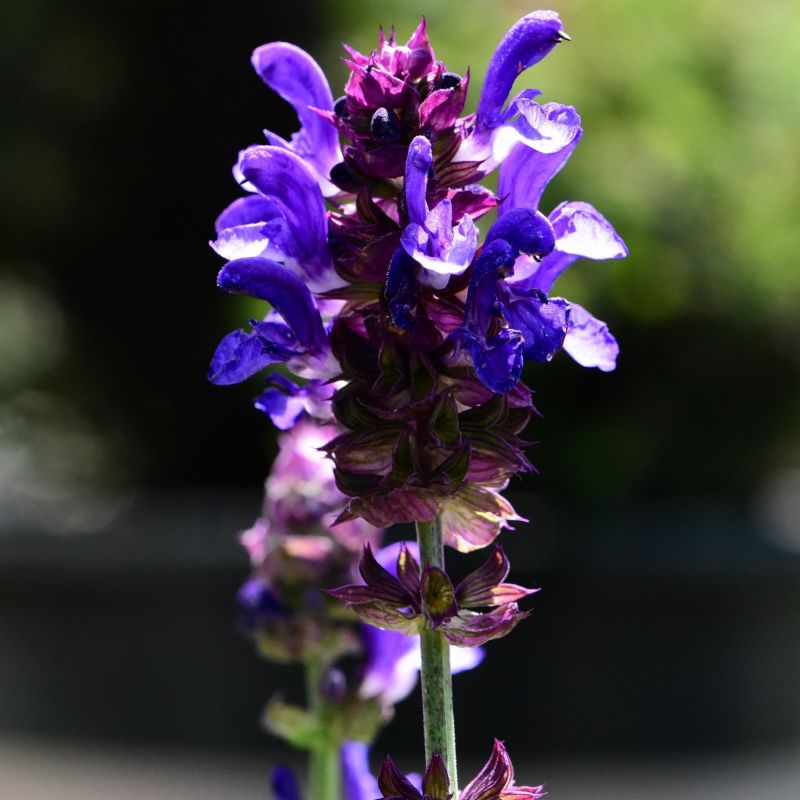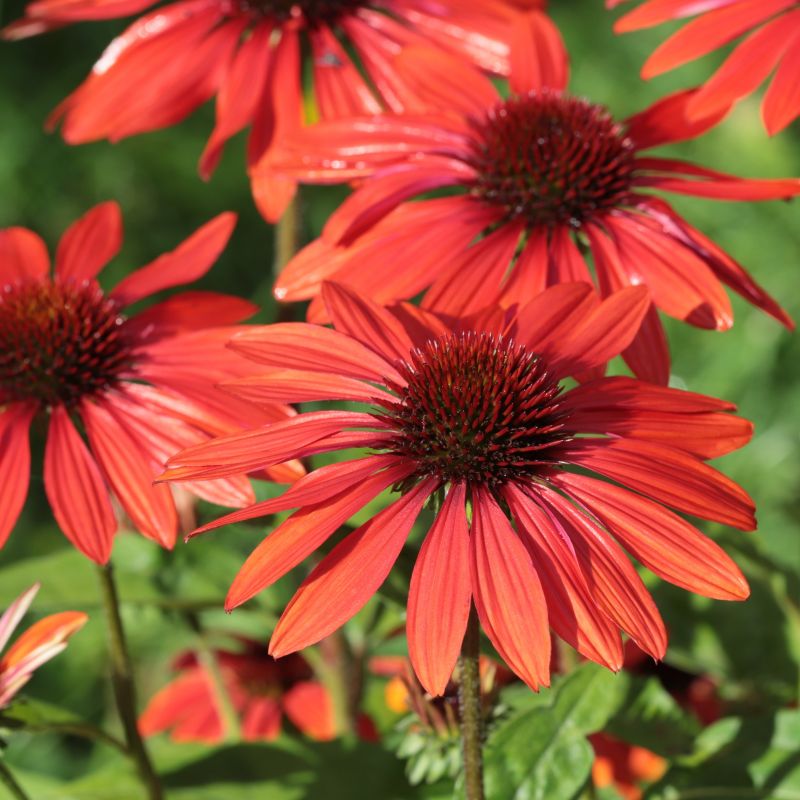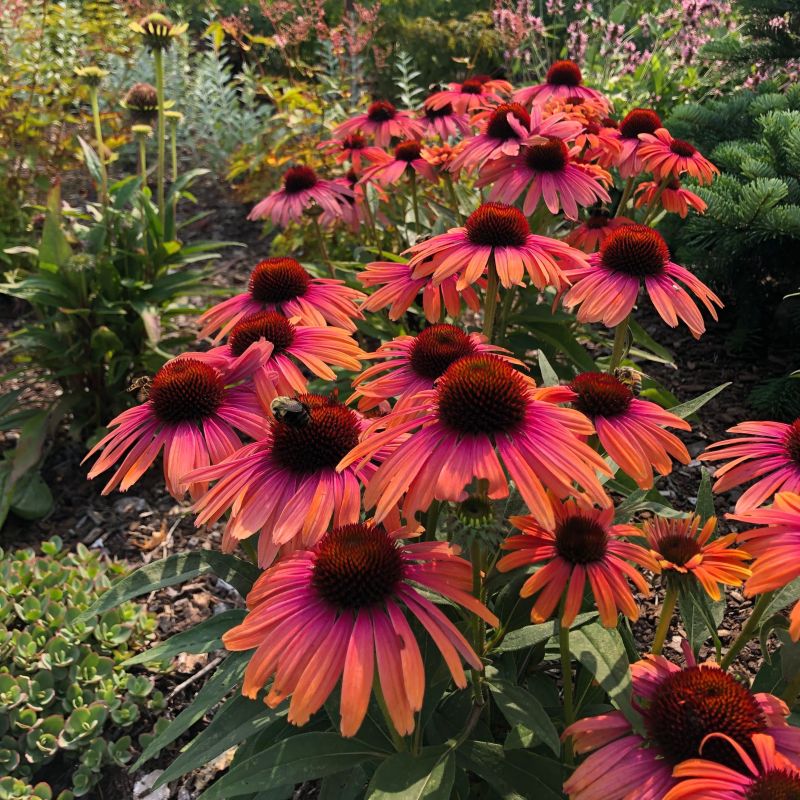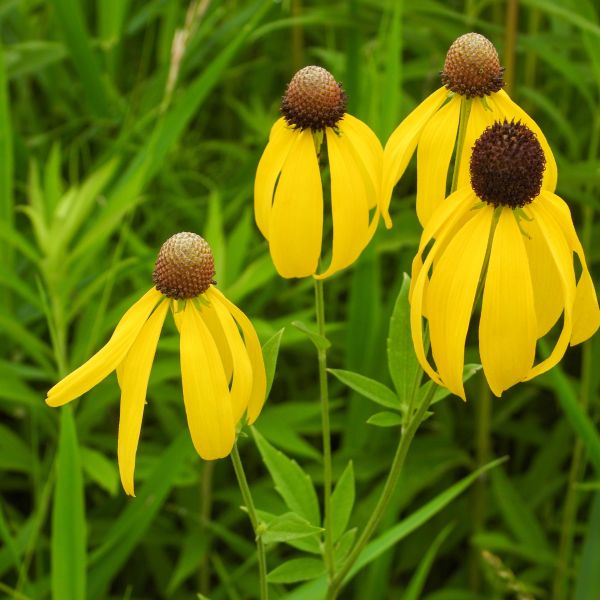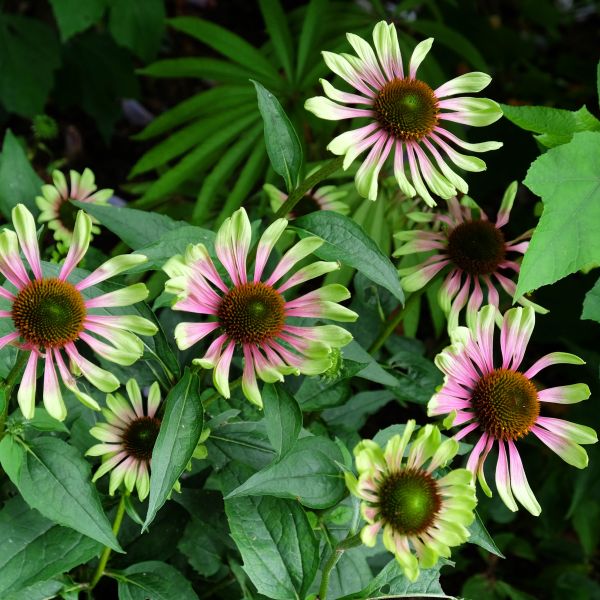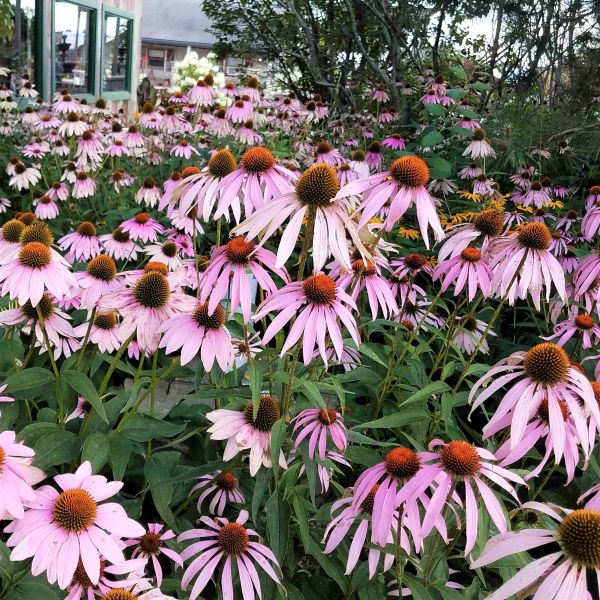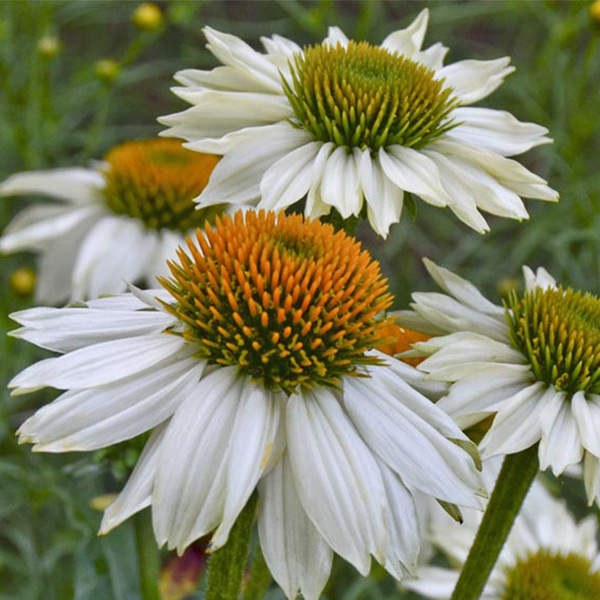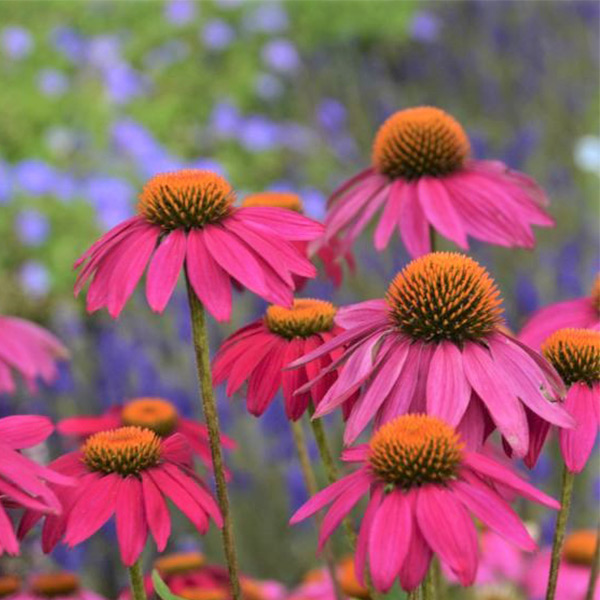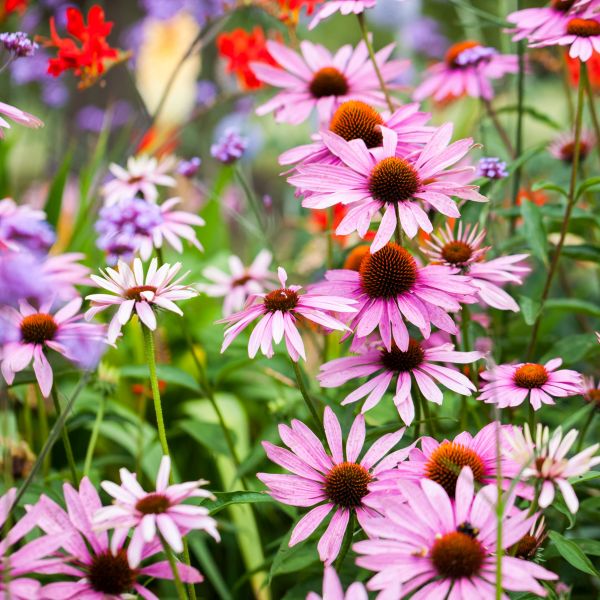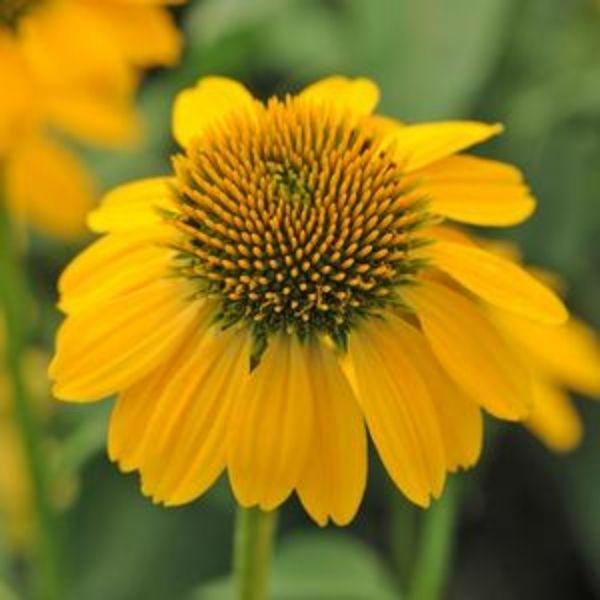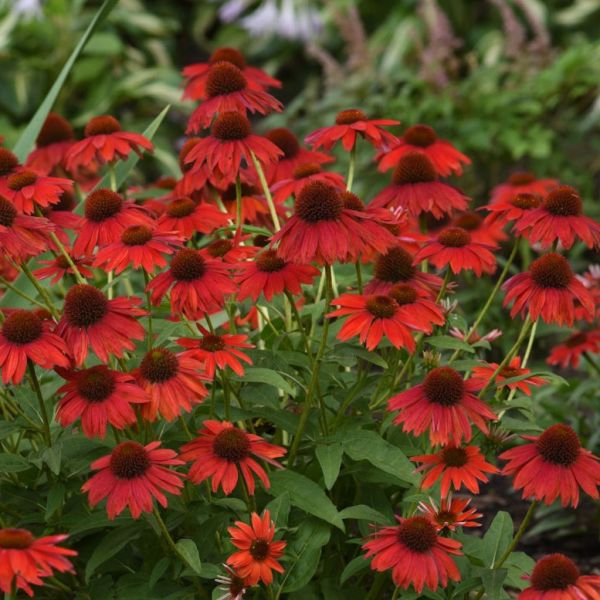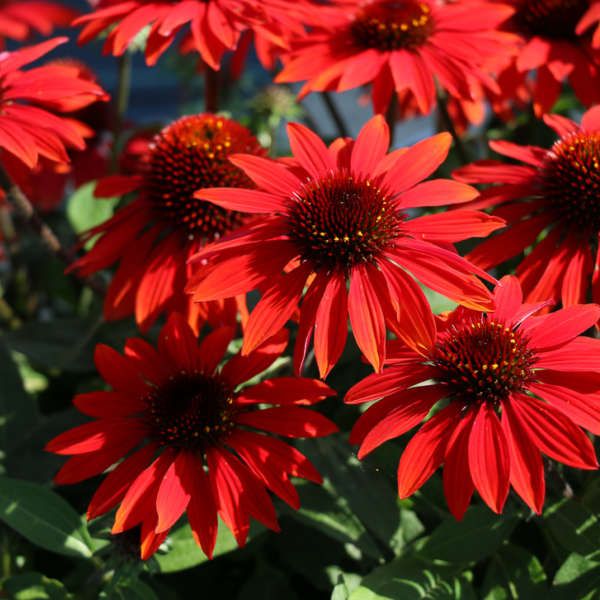
Robert Grimm Dwarf Culinary Sage
Salvia officinalis 'Robert Grimm'
20 reviews
Robert Grimm Dwarf Culinary Sage
Salvia officinalis 'Robert Grimm'
20 reviews
- Highly aromatic leaves that add a bold flavor to dishes
- Compact growth habit makes it ideal for small gardens or containers
- Drought tolerant and deer resistant for easy maintenance
- Recommended by landscape designers for optimal fit in real yards
$47.00
$68.00
30% Off
- Ships to 43215 in 3 to 7 days
- Free Shipping Over $150
- Plant Arrival Guarantee
- In Stock
- Free Plant Consult
$200 - Landscape-Approved: Every Plant We Sell Comes With Design Expertise Behind It
1 Gallon
Not just beautiful - intentionally selected by ShrubHub's 3D landscape design team to fit real-world spaces and maximize yard potential.
Why Robert Grimm Dwarf Culinary Sage?
Robert Grimm Dwarf Culinary Sage (Salvia officinalis 'Robert Grimm') is a compact variety of sage that reaches a height and width of only 12-18 inches. It has aromatic, gray-green leaves that are commonly used in cooking to add flavor to various dishes. This dwarf sage is ideal for growing in containers or small gardens, and its attractive foliage also makes it a beautiful ornamental plant.
People who loved this plant also bought
Sunlight
The Robert Grimm Dwarf Culinary Sage requires full sun exposure to thrive.
Watering
Robert Grimm Dwarf Culinary Sage requires moderate watering. It should be watered when the top inch of soil feels dry to the touch. Overwatering should be avoided, as it may cause root rot.
Fertilizing
Fertilizer requirements for Robert Grimm Dwarf Culinary Sage may vary, but a balanced and organic fertilizer, applied once or twice a year, can help ensure healthy growth and development.
Product Description: Robert Grimm Dwarf Culinary Sage
The Robert Grimm Dwarf Culinary Sage, scientifically known as Salvia officinalis 'Robert Grimm', is a delightful perennial herb ideal for adding robust flavor to various culinary dishes. This compact variety of sage features a profusion of attractive gray-green leaves that emit a distinct aroma, making it a popular choice among culinary enthusiasts and gardeners alike.
Features:
- Compact Size: The Robert Grimm Dwarf Culinary Sage is a small-sized plant, typically growing to a height and spread of 12-18 inches, making it perfect for container gardening or small herb gardens.
- Fragrant Foliage: The gray-green leaves of this sage variety exude a pleasantly strong aroma which intensifies when the leaves are crushed or bruised.
- Culinary Uses: Known for its culinary value, the Robert Grimm Dwarf Culinary Sage is frequently used to enhance the flavor of numerous dishes. Its leaves can be harvested and used in recipes for poultry, stuffing, soups, sauces, and infused oils.
- Drought Tolerant: This sage variety is well-adapted to dry conditions, making it an excellent choice for water-wise or xeriscape gardens. It thrives in well-drained soil and performs best in full sun to partial shade.
- Long Blooming Period: In addition to its culinary benefits, this sage produces attractive lavender-blue flowers that bloom from late spring to early summer, providing ornamental value to your garden.
Usage and Care:
The Robert Grimm Dwarf Culinary Sage is relatively easy to grow and requires minimal maintenance. To ensure optimal growth:
- Planting: Choose a location with well-drained soil and follow the recommended spacing guidelines when planting. This sage can be grown in containers or directly in the ground.
- Watering: Once established, this drought-tolerant plant only needs occasional watering. Avoid overwatering, as it can lead to root rot.
- Pruning: Regularly trim back the plant to promote bushier growth and prevent it from becoming woody. Pruning also encourages the production of fresh, flavorful leaves.
- Harvesting: Leaves can be harvested at any time during the growing season. Pick them individually or cut entire stems, but avoid removing more than one-third of the plant at a time.
- Winter Care: In colder climates, this sage may require extra protection during winter. Applying a layer of mulch around the base of the plant helps to insulate the roots.
Whether you're an avid cook or a passionate gardener, the Robert Grimm Dwarf Culinary Sage delivers both aesthetic and culinary satisfaction. With its delightful fragrance, versatile uses, and ease of care, this sage variety is sure to become a cherished addition to your herb garden or landscape.
Plant Information:
| Botanical Name: | Salvia officinalis 'Robert Grimm' |
| USDA Zones: | 4 - 8 |
| Water: | Low Once Established |
| Exposure: | Full Sun |
| Soil Needs: | Well Drained |
| Mature Height: | 12 - 24 inches |
| Mature Spread: | 2 - 3 feet |






Pollination Info
Robert Grimm Dwarf Culinary Sage (Salvia officinalis 'Robert Grimm')
Robert Grimm Dwarf Culinary Sage is a variety of Salvia officinalis, a popular culinary herb known for its aromatic leaves and attractive purple flowers. This particular variety, 'Robert Grimm,' is a compact cultivar that is highly valued for its growth habit and flavor.
Pollination
Salvia officinalis is primarily pollinated by bees and other pollinators. The purple flowers of the Robert Grimm Dwarf Culinary Sage are particularly attractive to bees, butterflies, and hummingbirds, which visit the flowers to feed on the nectar and inadvertently transfer pollen from one flower to another.
The flowers of Salvia officinalis are perfect, meaning they have both male and female reproductive structures. They produce both pollen, located in the stamens, and ovules, located in the pistil. When a pollinator visits a flower, it picks up pollen from the stamens on its body and transfers it to the pistil of another flower, facilitating fertilization and subsequent seed development.
It's important to note that Salvia officinalis is a self-fertile plant, meaning it is capable of self-pollination. However, cross-pollination by pollinators can lead to increased genetic diversity, which is beneficial for the plant's overall health and adaptability.
Attracting Pollinators
If you want to attract pollinators to your Robert Grimm Dwarf Culinary Sage, there are a few things you can do:
- Plant flowers nearby: Surrounding your sage plant with other flowering plants, especially those that are native to your region, can help attract a greater diversity of pollinators.
- Provide a water source: Having a water source, such as a shallow bird bath or a small container with damp pebbles, can invite pollinators to stay longer in your garden.
- Avoid pesticide use: Pesticides can harm or repel pollinators. Opt for organic gardening practices to create a safe environment for them.
- Choose sunny locations: Most pollinators are attracted to brightly lit areas. Plant your sage in a spot that receives ample sunlight.
By employing these strategies, you can increase the chances of attracting pollinators and promoting the overall health and productivity of your Robert Grimm Dwarf Culinary Sage.
FAQ
Robert Grimm Dwarf Culinary Sage (Salvia officinalis 'Robert Grimm') FAQ
1. What is Robert Grimm Dwarf Culinary Sage?
Robert Grimm Dwarf Culinary Sage (Salvia officinalis 'Robert Grimm') is a variety of the common sage plant. It is named after Robert Grimm, a noted horticulturist, and is specifically cultivated for its culinary uses.
2. What are the characteristics of Robert Grimm Dwarf Culinary Sage?
This sage variety is a compact dwarf perennial herb that grows up to 12-18 inches in height. It has greyish-green leaves with a slightly fuzzy texture. The foliage emits a strong, earthy aroma and features a flavorful taste.
3. How do I grow Robert Grimm Dwarf Culinary Sage?
To grow Robert Grimm Dwarf Culinary Sage:
- Choose a sunny location with well-drained soil.
- Plant the sage in spring or early fall, spacing each plant 12-18 inches apart.
- Water the plant regularly, keeping the soil moist but not waterlogged.
- Prune the plant to maintain its compact shape and stimulate growth.
4. Can I grow Robert Grimm Dwarf Culinary Sage in containers?
Yes, Robert Grimm Dwarf Culinary Sage can be grown in containers. Choose a pot that is at least 12 inches in diameter and has drainage holes. Use a well-draining potting mix and ensure the container receives ample sunlight.
5. How often should I water Robert Grimm Dwarf Culinary Sage?
Water the sage plant regularly, aiming to keep the soil evenly moist. However, avoid overwatering as it can lead to root rot. Check the soil moisture level by inserting your finger about an inch deep into the soil. If it feels dry, it's time to water.
6. What are the culinary uses of Robert Grimm Dwarf Culinary Sage?
Robert Grimm Dwarf Culinary Sage is highly regarded for its culinary applications. The leaves of this sage variety can be used fresh or dried to add flavor to various dishes, particularly in stuffing, meats, sauces, and soups. It pairs well with poultry, pork, and roasted vegetables.
7. Can I use Robert Grimm Dwarf Culinary Sage for medicinal purposes?
Yes, like other sage varieties, Robert Grimm Dwarf Culinary Sage has been traditionally used for its medicinal properties. It is known for its potential anti-inflammatory, antioxidant, and antimicrobial properties. However, it is important to consult a healthcare professional before using it for medicinal purposes.
8. How do I harvest the leaves of Robert Grimm Dwarf Culinary Sage?
To harvest the leaves:
- Wait until the plant is well-established, typically after the first year of growth.
- Using clean, sharp scissors or pruning shears, cut leaves from the plant, starting from the top and working your way down.
- Leave at least a third of the growth intact to ensure the plant remains healthy and continues to produce new leaves.
9. Can I propagate Robert Grimm Dwarf Culinary Sage?
Yes, Robert Grimm Dwarf Culinary Sage can be propagated through stem cuttings or division. Both methods are best performed in spring:
- Stem cuttings: Take 4-6 inch cuttings from the new growth, remove lower leaves, and place them in moist potting mix. Keep them in a warm location and ensure the soil remains moist. They should root within a few weeks.
- Division: Carefully dig up the plant and separate the clumps into individual sections, each with its own roots. Replant them in suitable locations and water thoroughly.
10. How cold hardy is Robert Grimm Dwarf Culinary Sage?
Robert Grimm Dwarf Culinary Sage is generally cold hardy and can tolerate temperatures down to USDA hardiness zones 5-9. However, extremely harsh winters can sometimes damage the plant, so providing a layer of mulch around the base can help protect it.
Planting & Care
Planting & Care for Robert Grimm Dwarf Culinary Sage (Salvia officinalis 'Robert Grimm')
Planting:
- Choose a location with full sun to partial shade (6-8 hours of direct sunlight per day).
- Ensure the soil is well-draining, as sage plants do not tolerate wet feet.
- Amend the soil with organic matter, such as compost, to improve drainage and enrich the soil.
- Dig a hole that is slightly larger than the root ball of the plant.
- Place the plant in the hole, making sure the top of the root ball is level with the ground.
- Backfill the hole with soil, gently firming it around the plant.
- Water the plant thoroughly after planting to settle the soil.
Care:
- Watering:
- Water the plant deeply once a week during dry spells, ensuring the soil is evenly moist but not waterlogged.
- Avoid over-watering as sage plants are drought-tolerant once established.
- Allow the top inch of soil to dry out between waterings.
- Pruning:
- Prune the plant in early spring to remove any dead or damaged growth.
- Regularly trim the plant to maintain a compact shape and encourage new growth.
- Harvest leaves as needed throughout the growing season, which will also help promote bushier growth.
- Fertilization:
- Apply a balanced slow-release fertilizer in early spring, following the packaging instructions for application rates.
- Avoid over-fertilization, as excessive nitrogen can result in leggy growth.
- Mulching:
- Apply a layer of organic mulch, such as wood chips or straw, around the base of the plant to help conserve moisture and suppress weeds.
- Avoid mulching directly against the stem to prevent rot.
- Winter Care:
- Robert Grimm dwarf culinary sage is typically hardy in USDA zones 5-9.
- In colder regions, provide a layer of mulch or straw around the base of the plant to protect the roots from freezing temperatures.
- In extreme cold, consider covering the plant with a cloth or plant cover.
Check Out These Verified Customer Reviews:
Customer Reviews
4.8 out of 5 based on 20 reviews
Thank you! Your review has been submitted.
Fast shipping, received my plants sooner than expected.
The Dwarf Culinary Sage arrived in perfect condition.
Arrived in great condition
Item has been added to your cart.



